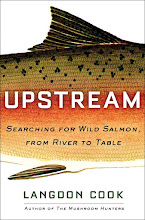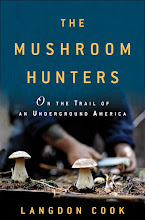Christina was a nurturing soul who loved to feed people with her food, warmth, and good spirit. During its brief run, her restaurant Nettletown in Seattle developed a devoted following and probably offered the highest ratio of wild to conventional food of any regularly operating restaurant in the country. To eat at Nettletown was to know exactly what was growing wild at that very moment somewhere in the mountains, woods, or river valleys just beyond the city. This was one of the reasons why you had to be back next week—there was always something new coming into season, prepared in an unfussy way that allowed the ingredient's singular qualities to shine.
Another reason was Christina herself. The kitchen couldn't contain her. She needed to come out and visit with her customers—and we needed to bask in her glowing presence.
One time I brought a class of high schoolers to Nettletown. All week we had been foraging for wild foods as part of a week-long experiential course, in the Cascades, along the shore, even in a Seattle park. Our visit to Nettletown was a reward of sorts for the effort the students had put into the class and also a reminder of how food brings people together. Christina looked tired to me that day and I was worried about her. The hurly-burly of the restaurant business seemed to be taking a toll. Nevertheless, she rose to the occasion, coming out of her busy kitchen to spend time with the kids. She talked passionately about the various wild foods on the menu and where they came from, their high nutritious value and unique flavors. Afterward, on the bus ride back to school, several of the students told me how much of an impression Christina had made on them. "She's rad," one tenth grader said—high praise.
I usually visited Nettletown with my notebook and camera. My plan was to write a comprehensive post about this unlikely restaurant and its food over the course of a year's seasons, highlighting many of my favorite dishes. But just as soon as the experiment had begun, it was over. The restaurant closed at the end of August this year. In some ways I wasn't surprised. When I asked Christina about it, she said she was exhausted and needed to take care of her health. Like her cooking, she was direct, honest, and true to herself.
After months of not feeling like her usual self, Christina finally saw a neurologist. On December 12 she was diagnosed with a 5-cm brain aneurysm and went into surgery two days later. As feared, the aneurysm burst during surgery, and more complications followed. She died on December 28 while surrounded by the love of her family. She was 34.
We will miss you, Christina, the many of us who you nurtured with your food and kindness.










